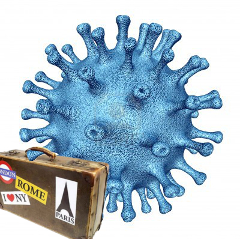Ancient risks may return
 Scientists have modelled the risk of ancient pathogens being released from melting permafrost.
Scientists have modelled the risk of ancient pathogens being released from melting permafrost.
Ancient pathogens, once dormant in ice and permafrost for millennia, could spell disaster for the planet's delicate ecosystems.
A computer simulation has revealed that even the release of a mere 1 per cent of these unpredictable microbes could trigger widespread environmental damage and result in the loss of host organisms worldwide.
The growing menace of climate change has accelerated the thawing of glaciers and permafrost, unleashing what researchers call ‘time-travelling’ pathogens from the past.
These ancient microbes pose grave risks not only to our environment but also to humanity itself.
Until now, predicting the extent of the havoc these pathogens could cause has been a daunting task.
However, a global study led by Dr Giovanni Strona from the European Commission Joint Research Centre and Professor Corey Bradshaw from Flinders University in Australia, recently published in the open-access journal PLOS Computational Biology, has brought the world closer to understanding the potential ecological catastrophe.
To assess the dangers posed by these enigmatic invaders, the researchers employed advanced computer simulations.
They observed how digital pathogens from the past infiltrated communities of bacteria-like hosts and compared the effects with those in undisturbed communities.
Shockingly, the simulations revealed that ancient pathogens often managed to thrive and evolve in the modern world, with approximately 3 per cent of them dominating their new environment.
Alarming still, about 1 per cent of these intruders had unpredictable consequences.
Some caused up to one-third of host species to perish, while others surprisingly increased diversity by up to 12 per cent, compared to control simulations without any invasions.
While the percentage may appear small, the sheer number of ancient microbes being released into our ecosystems poses a significant threat.
Dr Giovanni Strona, the lead author, highlights the importance of their findings, stating; “For the first time, we provide an extensive analysis of the risk posed to modern ecological communities by these 'time-travelling' pathogens through advanced computer simulations”. “Our results suggest that unpredictable threats once confined to science fiction could now become powerful drivers of ecological damage,” he said.
Professor Corey Bradshaw of Flinders University shares the concern, stating; “The risk of invasion by unknown 'black swan' pathogens that can cause irreversible damage is not negligible. In the worst-case scenario, the invasion of a single ancient pathogen reduced the size of its host community by 30 per cent compared to our non-invasive controls”.








 Print
Print